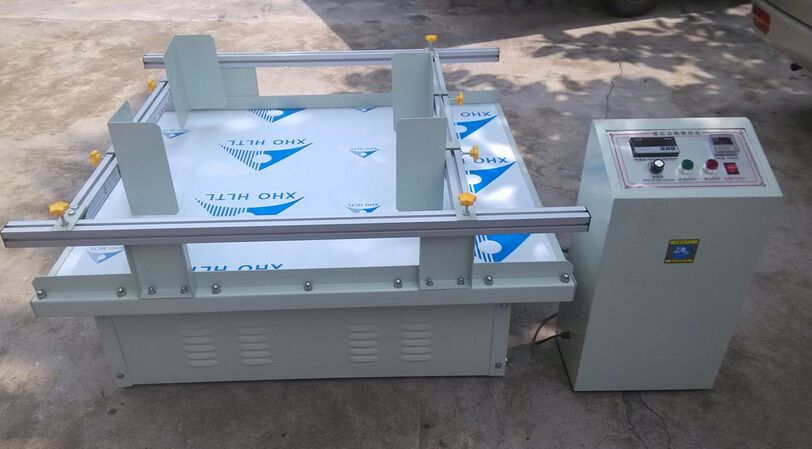ISTA 6-Full Container Vibration Simulation
The ISTA 6-Full Container Vibration Simulation is a critical test procedure used to assess the durability and resilience of packaged goods under simulated transport conditions. This testing method aims to replicate the harsh environments encountered during shipping, ensuring that products arrive at their destination in pristine condition.
During this simulation, full containers are subjected to controlled vibration stress to evaluate how well they withstand the rigors of transportation. The primary purpose is to determine if the packaging will protect the contents from damage due to vibrations experienced during transit. This test plays a crucial role for industries like automotive, electronics, pharmaceuticals, and consumer goods where product integrity is paramount.
The ISTA 6-Full Container Vibration Simulation closely follows the guidelines outlined in ISO/TS 2859-1:2003, which provides standard sampling procedures for inspection bodies. It ensures that testing practices are consistent across different laboratories and helps maintain high standards of quality control.
For effective ISTA 6-Full Container Vibration Simulation, it is essential to follow a structured approach starting with the selection of appropriate specimens based on their size and shape. Specimens must be carefully prepared to replicate real-world conditions as closely as possible. The testing apparatus typically includes shakers capable of generating controlled vibration frequencies and amplitudes that mimic actual transport scenarios.
The test procedure involves placing the packaged goods inside a container, which is then mounted on a shaking platform. The system operates continuously for several hours to simulate various stages of transportation, including loading/unloading operations, road travel, and sea journeys. Throughout this period, sensors monitor key parameters such as acceleration levels, frequency ranges, and duration.
The outcome of the ISTA 6-Full Container Vibration Simulation provides valuable insights into potential weaknesses in packaging designs. Engineers can use these results to refine their approaches, ensuring better protection against environmental factors that may impact product quality. By incorporating feedback from such tests early in the design process, manufacturers can significantly enhance overall product performance and customer satisfaction.
| Industry | Application |
|---|---|
| Automotive | Evaluating packaging for car parts during transit. |
| Electronics | Determining whether electronic devices will survive shipment vibrations. |
| Pharmaceuticals | Ensuring drug containers can handle rough handling during delivery. |
| Consumer Goods | Testing packaging robustness for everyday household items. |
Scope and Methodology
The ISTA 6-Full Container Vibration Simulation focuses on evaluating the performance of packaged goods under simulated transport conditions. The scope encompasses various stages of transportation, including loading/unloading procedures, road travel, and sea voyages.
To conduct this test accurately, a controlled environment is established using specialized shaking equipment designed to reproduce typical vibration patterns found in different modes of transport. Specimens are placed within containers that are then secured onto the shaking platform. Sensors measure crucial factors like acceleration rates, frequency bands, and exposure durations throughout the simulation.
The methodology involves setting up specific parameters based on predefined standards such as ISO/TS 2859-1:2003. These include selecting appropriate specimen sizes, preparing them meticulously to represent actual products accurately, and ensuring proper mounting within containers. Additionally, environmental factors like temperature variations are also considered where relevant.
During the test run, continuous monitoring ensures compliance with set criteria. Engineers analyze collected data to identify any discrepancies or areas requiring improvement. This information serves as a basis for enhancing packaging designs further down the line.
| Use Case | Example |
|---|---|
| Evaluating Package Durability | Testing the robustness of packages containing fragile electronic components. |
| Assessing Container Design | Determining how well a container protects its contents during shipment. |
| Improving Packaging Protocols | Identifying weak points in current packaging practices for continuous improvement. |
| Enhancing Consumer Satisfaction | Making sure that products reach customers without any damage from rough handling. |





